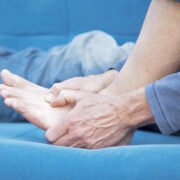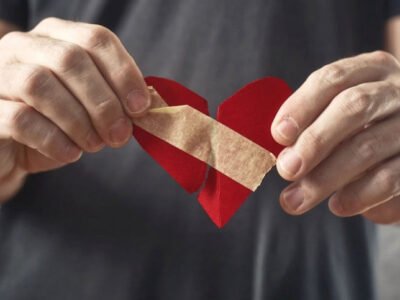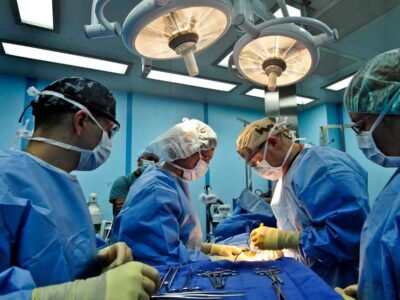Ligament injuries are more than just a setback; they’re a common yet serious concern for many, especially athletes and individuals whose jobs demand physical labor. These injuries occur when ligaments, the tough bands of fibrous tissue that connect bones, are stretched or torn. Immediate treatment is crucial not just for pain relief but for the health and functionality of the entire musculoskeletal system. Fortunately, the road to recovery isn’t limited to surgery. A variety of treatments and healthy habits can lead to a quicker and more effective healing process. For those eager to return to their daily routines or sporting events, exploring these options is essential.
Here are some ways you can recover quickly after such an injury.
1.Understanding Ligament Injuries: The First Step to Recovery
The foundation of effective recovery is a thorough understanding of ligament injuries. Ligaments are crucial for stabilizing joints and facilitating normal movement. When they are injured, the affected joint becomes weak and unstable, leading to pain, swelling, and a decreased range of motion. Recognizing the severity and type of ligament injury is crucial, as it dictates the treatment approach. Early diagnosis and treatment can significantly enhance the healing process, preventing chronic issues and ensuring a return to full functionality.
2.The Promise of Prolozone Treatment
One innovative approach to ligament injury recovery is Prolozone treatment. This non-surgical option utilizes a combination of oxygen in the form of ozone and nutrients to stimulate the body’s natural healing processes. You might wonder: is Prolozone a steroid? The answer is no, it is not. Steroids weaken the tissues and hinder healing instead of promoting it.
Prolozone therapy works by increasing blood flow and nutrients to the injured area, reducing inflammation and pain, and encouraging the regeneration of the ligament tissues. It’s particularly effective for those seeking an alternative to invasive procedures, offering a promising avenue for rapid and effective healing.
3.Rest and Protect the Injured Area
The initial step in recovering from a ligament injury is to rest and protect the affected area. This might seem straightforward, but it’s a critical phase where further injury can be prevented, and the healing process can commence. Avoiding activities that stress the injured ligament is essential. Using braces or supports can also stabilize the area and prevent additional strain. Rest doesn’t mean complete immobility but rather a careful balance of protecting the injury while maintaining as much function as possible.
4.Ice Therapy: A Cool Path to Reduction of Swelling
Applying ice to the injured ligament is a time-tested method for reducing swelling and alleviating pain. Ice therapy works by constricting blood vessels, which decreases blood flow to the affected area, thus reducing inflammation and swelling. It’s most effective when applied in the first 48 hours after the injury occurs, using a cloth to protect the skin from direct ice contact. Short, frequent sessions of ice application can significantly aid the recovery process.
5.Compression Techniques
Alongside rest and ice, compression is a key component of the initial treatment for ligament injuries. Using bandages or compression garments can help reduce swelling and provide support to the injured area. It’s important to apply compression correctly; too tight can impede circulation, while too loose may not offer the necessary support. The compression should be snug but comfortable, ensuring it aids rather than hinders the healing process.
6.Elevate to Alleviate
Elevation plays a pivotal role in reducing swelling and accelerating the recovery process. By lifting the injured area above the level of the heart, gravity assists in draining excess fluid, thereby decreasing inflammation. Especially in the initial days following an injury, regular intervals of elevation can provide significant relief and prevent the accumulation of swelling. This simple yet effective technique complements the rest, ice, and compression approach, collectively known as the RICE method, forming a comprehensive strategy for early recovery stages.
7.Engage in Physical Therapy
Physical therapy emerges as a cornerstone of effective rehabilitation. Tailored exercises and therapy sessions aim to restore the injured ligament’s strength and flexibility. A professional physical therapist can design a program that addresses the specific needs of the injury, gradually increasing in intensity to challenge the ligament without risking further damage. Techniques such as stretching, strengthening exercises, and proprioception training not only support the healing ligament but also fortify the muscles around it, providing additional stability and reducing the likelihood of re-injury.
8.Strengthen Surrounding Muscles
Focusing on the muscles around the injured ligament is crucial for two reasons: it supports the weakened area and prevents future injuries by enhancing overall joint stability. Strengthening exercises should be approached with caution, starting gently and increasing in intensity based on the body’s response. This process, often integrated into a physical therapy program, ensures that recovery is not just about healing but also about building a stronger, more resilient body.
9.Nutritional Support for Healing
The role of nutrition in the healing process cannot be overstated. Certain nutrients, including protein, vitamins C and D, zinc, and omega-3 fatty acids, play pivotal roles in tissue repair and reducing inflammation. Incorporating a diet rich in these nutrients can significantly support the body’s healing efforts. Staying informed about the best food sources of these nutrients and possibly consulting a nutritionist can optimize the recovery process, ensuring the body has all it needs to heal effectively.
10.Stay Hydrated
Hydration is another fundamental aspect of ligament injury recovery. Water is essential for all bodily functions, including the healing process. It helps to transport nutrients to the injury site, facilitates the removal of waste products, and maintains optimal tissue health.
Here are practical tips to ensure you stay adequately hydrated:
- Drink Regularly: Don’t wait until you’re thirsty to drink water. Thirst is often a late sign of dehydration. Aim to drink water consistently throughout the day, setting reminders if necessary.
- Monitor Your Intake: While the “8 glasses a day” rule is a good baseline, everyone’s needs are different, especially when recovering from an injury. Consider factors like your level of activity, the climate, and your overall health to adjust your intake.
- Include Hydrating Foods: Fruits and vegetables with high water content, such as cucumbers, strawberries, and watermelon, can supplement your fluid intake while providing essential nutrients for recovery.
- Avoid Dehydrating Substances: Certain beverages and substances can dehydrate your body, including alcohol, caffeine in high amounts, and overly salty foods. Moderating these can help maintain optimal hydration levels.
Conclusion
Recovering from a ligament injury is a journey that involves more than just medical treatments. It’s about making smart choices and adopting habits that support your body’s natural healing processes. Whether you’re an athlete eager to return to the game or someone whose daily life has been impacted, these tips can guide you toward a quicker, more effective recovery. Remember, every step taken with care and knowledge is a leap forward in regaining your strength and mobility.


















Comments